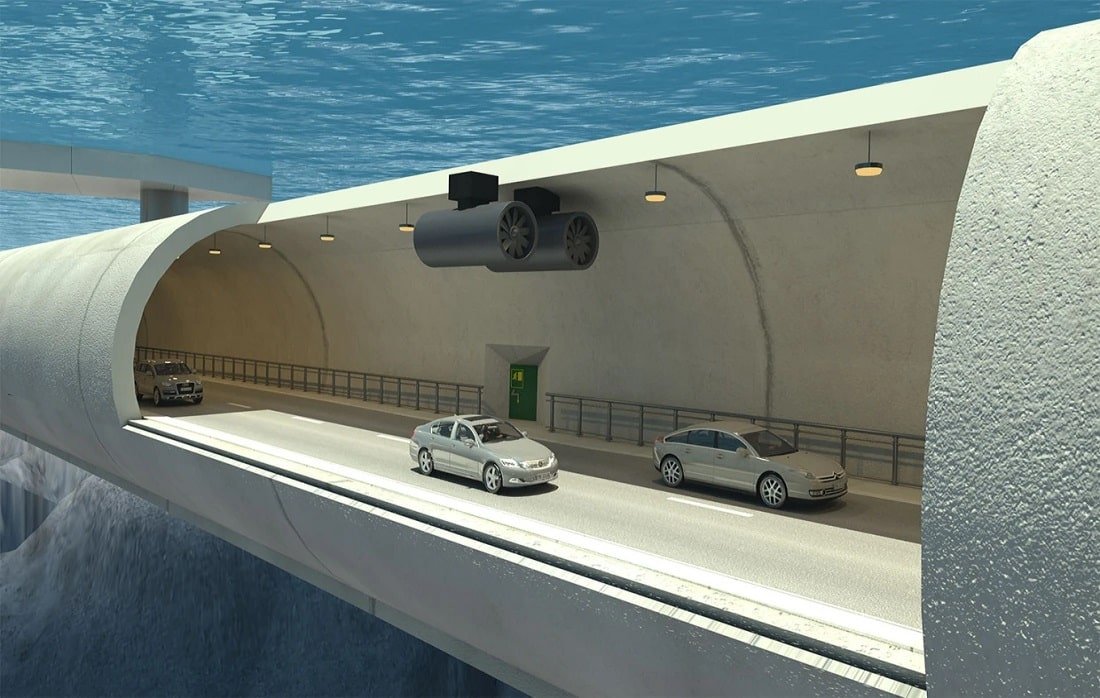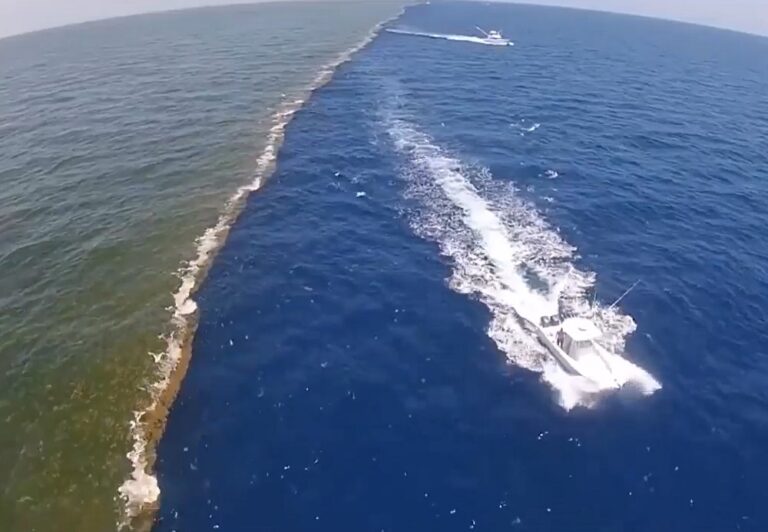Norway Underwater Floating Tunnel: Future of Transport
Last Updated on 5th November 2025 by admin
Imagine driving along a highway, not over land, but beneath the sea. This isn’t science fiction; it’s an ambitious plan unfolding in Norway. Norway is planning to Build World’s First Largest and Floating Underwater Tunnel. Isn’t that amazing?
Norway is recognized not only for its spectacular natural beauty but also for its ambitious infrastructure projects. One of the most interesting projects taking place right now is the Norway underwater and floating tunnel project. The tunnel will connect Norway’s rural areas, make critical resources more accessible, and improve the local economy. This article will explore some details about the Norway underwater tunnel project, the Norway floating tunnel, and other related issues.
Table of Contents
Overview of the Norway’s Underwater Floating Tunnel Project

The Norway underwater and floating tunnel project is a new infrastructure project that seeks to bridge the gap between remote parts of Norway and the mainland. This is not normal tunnel that have been hewn through rock. The idea is sunken, floating pipes attached on the bottom of the sea.
This is an ingenious solution that seeks to transform transport on the west coast of Norway. Now, the routes across fjords use ferries which contribute a considerable amount of time and inconvenience to the trips. The floating tunnel will ensure an improved, continuous passage of traffic.
Despite the challenges, the floating tunnel project of Norway is a breakthrough project in the transportation infrastructure. Provided it succeeds, it would open up the way to similar projects elsewhere in the world. This project is worth following due to the possible positive effects on the connectedness, ease of travel, and, perhaps, less environmental impact.
The Norway underwater tunnel and the Norway floating tunnel are the key elements in this project. The underwater tunnel will be among the deepest and longest tunnels in the world whereas the floating tunnel will be suspended on pontoons and be connected to the sea floor. The two tunnels will be marvels of engineering and their impact in the region is expected to be huge.
Underwater Tunnel Project: Details and Progress
The underwater tunnel which is set to be built in Norway would have been one of the longest and deepest in the world. The tunnel will measure about 27 kilometers in length and will go through two fjords and be depth of 390 meters under the sea level. The tunnel will link two of the large cities in Norway which are Kristiansand and Trondheim.
The project is under planning and feasibility phases and the environmental, geological, and technical assessment is being carried out. The Norwegian government is hoping that the project can be completed around 2050, at a cost of 480 billion NOK ($47 billion USD).
The Norway underwater tunnel project will require a state-of-the-art technology and experience. The tunnel will be forced to endure great weather, strong currents, and the pressure of the water over the tunnel. The engineers will also be required to determine the impact that the tunnel will have on the environment, particularly on the marine life and water quality. With such hurdles, the project is creating much dynamism and enthusiasm.
Floating Tunnel Length and Benefits
This tunnel will be released on the water as it will be kept off the pontoons and attached to the bottom. The idea will result in a faster and more efficient network of transport and will also reduce the carbon impact of transportation.
The floating tunnel in Norway is expected to be 5.5 kilometers (3.4 miles) long and will span the Bjrnafjord in Hordaland County. In addition to the floating tunnel, travel times from Bergen to Stavanger will drop in half from 5 hours to 2.5 hours. With an estimated project cost of 53.7 billion NOK (approximately $5.2 billion USD as of 2025), the floating tunnel is still in the planning and feasibility stage.
The Norway floating tunnel is an unprecedented engineering project that will require new methods of design and constructions. The tunnel would be required to withstand strong currents and waves and at the same time offer a safe and enjoyable experience to the travellers. Nevertheless, the project is creating a lot of excitement and interest in spite of the challenges.

Advantages of Norway Underwater Floating Tunnel
The Norway underwater and floating tunnel will provide a range of benefits to the region, including:
- Quicker access to important resources, such as oil and gas fields, fisheries, and aquaculture farms.
- Faster access of remote areas by the residents and tourists due to a reduction in travel time.
- Growing the local economy by improving trade and tourism.
- Less carbon emitted by offering a more sustainable form of transportation.
These advantages are likely to make a great difference in the region, both economically and environmentally. The Norway underwater and floating tunnel is an ambitious move of enhancing infrastructure in remote areas and it is something the other countries with the same struggles are keeping a close eye on.
Challenges and Risks to Build
The underwater and floating tunnel is not without their challenges and risks. Some of the potential issues include:
- High costs: The projects will be a high cost with the cost being estimated in the billions of dollars. The Norwegian government will be forced to think about the financial aspect of the projects carefully.
- Environmental impact: The tunnel may have a major impact on water quality and marine life. The engineers will be forced to take into consideration the effects on the environment and make efforts to reduce the negative impacts.
- Technical difficulties: The tunnel will involve the most up-to-date technology and skilled work. Any problems in the construction or operation may have severe impacts.
Despite these challenges, the Norwegian government is still determined to continue with the projects, and is trying to reduce the possible risks.
The floating and underground tunnel of Norway are a sensational infrastructural project that is generating a lot of buzz and interest. The projects are expected to offer a number of advantages among them being better access to important resources, reduced time of travel as well as environmentally friendly mode of transport. They, however, are not in absence of challenges and threats including high costs, environmental effects and technicality. However, the Norwegian government is determined to ensure that the projects are completed and a better future of Norway remote regions is established.






